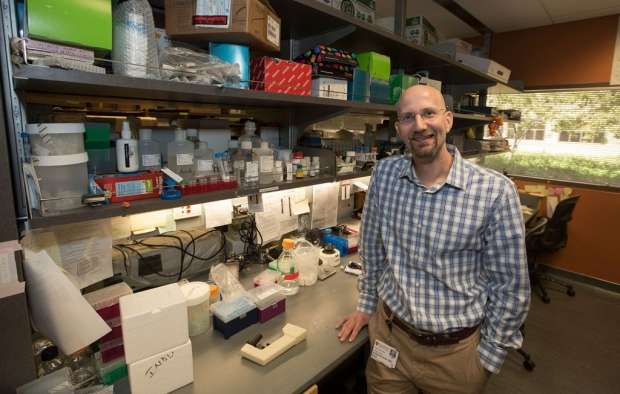Gene could help explain insulin resistance

Health researchers have known for decades that type 2 diabetes results from a phenomenon called insulin resistance, but what causes insulin resistance has remained a mystery.
Now, researchers at the Stanford University School of Medicine and the University of Wisconsin have begun to untangle a web of connections that includes a gene; mitochondria, which produce energy for cells; insulin resistance; and how well the body's metabolism functions.
"We've identified a mechanism for insulin resistance that involves a gene that ties insulin resistance to mitochondrial function," said Joshua Knowles, MD, PhD, an assistant professor of cardiovascular medicine at Stanford.
A paper describing the work was published in the Oct. 4 issue of Cell Reports. Knowles is the senior author, and Indumathi Chennamsetty, PhD, a postdoctoral scholar at Stanford, is the lead author.
Insulin is a hormone secreted by the pancreas that helps fat and muscle cells take glucose from the blood. When a person's cells stop responding to insulin, the person has insulin resistance and glucose builds up in the blood, signaling the pancreas to produce ever more insulin.
Insulin resistance severe enough to damage body tissues is common. One 2015 study estimated that nearly 35 percent of all U.S. adults are sufficiently insulin-resistant to be at greater risk of diabetes and cardiovascular disease. The environmental causes of the skyrocketing rate of insulin resistance in the United States include poor diet and sedentary habits, but the molecular mechanisms have been unknown, said Knowles.
Suspect gene
Previous work by Knowles and his team linked a variant of a human gene called NAT2 with insulin resistance in humans. In mice, suppressing a similar gene, called Nat1, caused metabolic dysfunction, including decreased insulin sensitivity and higher levels of blood sugar, insulin and triglycerides.
The new study shows that suppressing the expression of the Nat1 gene in mice interferes with the function of mitochondria—cell structures that make ATP, the energy currency of cells. Without ATP, cells cannot live and function.
In addition, mice whose Nat1 gene had been eliminated gained more weight and had larger fat cells and higher levels of biomarkers indicating inflammation than did regular mice, even though all the mice got the same amount of food and water.
The mice without Nat1 also had a decreased ability to use fat for energy, said Knowles, and they were also pretty slow on the exercise wheel. "When we put mice on a treadmill and make them exercise really, really hard, the mice that lack this Nat1 gene don't have the ability to keep up with normal mice," Knowles said. "And that supports the hypothesis that poorly functioning mitochondria are part of the problem."
Insulin resistance is a known forerunner to type 2 diabetes. But insulin resistance by itself—characterized by the decreased uptake of sugar by muscle and fat cells—can lead to cardiovascular disease, inflammation, polycystic ovary syndrome, fatty liver disease and other health conditions, even in people who do not have type 2 diabetes.
A person who is insulin-resistant but still making plenty of insulin may not have diabetes, said Gerald Reaven, MD, professor emeritus of cardiovascular medicine and a co-author of the paper. But the person will have higher triglyceride levels; lower levels of high-density lipoproteins—the "good" cholesterol; and higher blood pressure. All of these conditions increase the risk of heart disease.
Mystery of the slow-going mice
Exactly why the Nat1-free mice have trouble running is something Knowles and his colleagues are still working out. "Is that physically an effect on muscle, skeletal muscle? Is that an effect on the heart? We don't know exactly yet," he said. Upcoming work will focus on identifying a factor that links all these metabolic effects.
More information: Indumathi Chennamsetty et al. Nat1 Deficiency Is Associated with Mitochondrial Dysfunction and Exercise Intolerance in Mice, Cell Reports (2016). DOI: 10.1016/j.celrep.2016.09.005



















